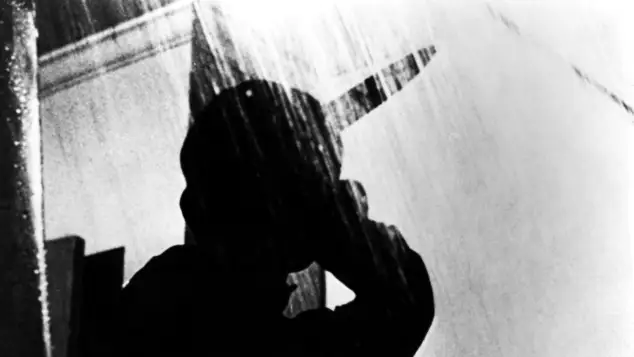It's now been 60 years since viewers first laid eyes on the movie that forever changed horror cinema — and our feelings about taking showers.
Yes, Alfred Hitchcock's Psycho premiered on June 16, 1960, at the DeMille Theatre in New York City.
Starring Anthony Perkins, Janet Leigh, and Vera Miles, the film stunned viewers at the time and remains a chilling masterwork and cultural touchstone 60 years later.
Here are five facts about Psycho that relive how the moviegoing phenomenon of 1960 came to be.
5) Psycho's "no late admissions" policy
Upon the theatrical release of Psycho in 1960, Hitchcock orchestrated a "no late admissions" policy to preserve the film's plot twists and avoid any confusion regarding the screen time of top-billed star Janet Leigh.
To add to the publicity for this decision, a cutout of Hitchcock was featured in theatre lobbies with this message:
"The manager of this theatre has been instructed at the risk of his life, not to admit to the theatre any persons after the picture starts. Any spurious attempts to enter by side doors, fire escapes or ventilating shafts will be met by force. The entire objective of this extraordinary policy, of course, is to help you enjoy PSYCHO more. Alfred Hitchcock"
RELATED: Alfred Hitchcock's Best Films
4) Psycho: The shower scene
Psycho's infamous "shower scene" runs three minutes and includes 50 cuts and 77 different camera angles — most of which occur during the scene's brief confrontation.
Hitchcock had intended for the shower scene to go without music, but, after composer Bernard Hermann revealed his now-iconic piece for the scene, Hitchcock acquiesced.
READ MORE: The Best Classical Horror Films
3) Hitchcock's bloody black and white film
Although Hitchcock had been making colour films for over a decade, he returned to black and white in 1960 for Psycho. This decision led to a creative choice regarding blood — which features most prominently in the shower scene, but also makes other appearances in the film.
Hitchcock elected to go with Hershey's Chocolate Syrup as a substitute for blood, because, in black and white, the dark syrup gave off a bolder, more vivid appearance than a red liquid.
2) The dead-eye effect
At the conclusion of "the shower scene," the camera tracks away from an extreme close up of Janet Leigh's still, lifeless eye. But, in reality, Leigh's pupils were still contracted.
After seeing the film, ophthalmologists contacted Hitchcock to inform him that he could achieve a true "dead-eye" effect - the appearance of dilated pupils - by using belladonna drops. He used the effect when needed in his films thereafter.
1) Robert Bloch's Psycho novel and Ed Gein
Psycho was based on the 1959 novel of the same title by author Robert Bloch. His book, meanwhile, was loosely inspired by real-life murderer and grave robber Ed Gein, who lived only a short distance away from Bloch in the state Wisconsin.
Along with Psycho's "Norman Bates," Gein was a rural murderer with a disturbing preoccupation with his deceased mother. Gein was also a body snatcher who was caught with evidence of a human trophy collection.
RELATED: The Best Netflix Original True Crime Shows
Watch the original six-minute trailer for Psycho featuring Alfred Hitchcock below.







